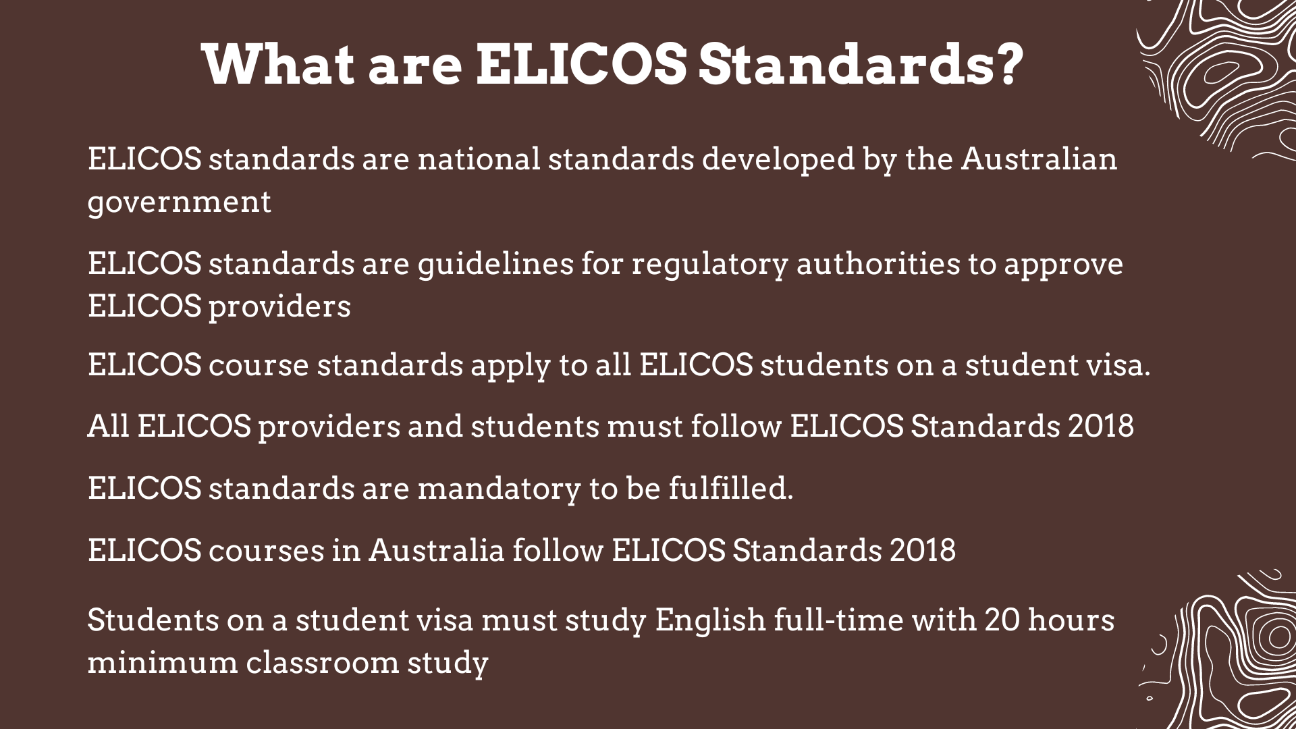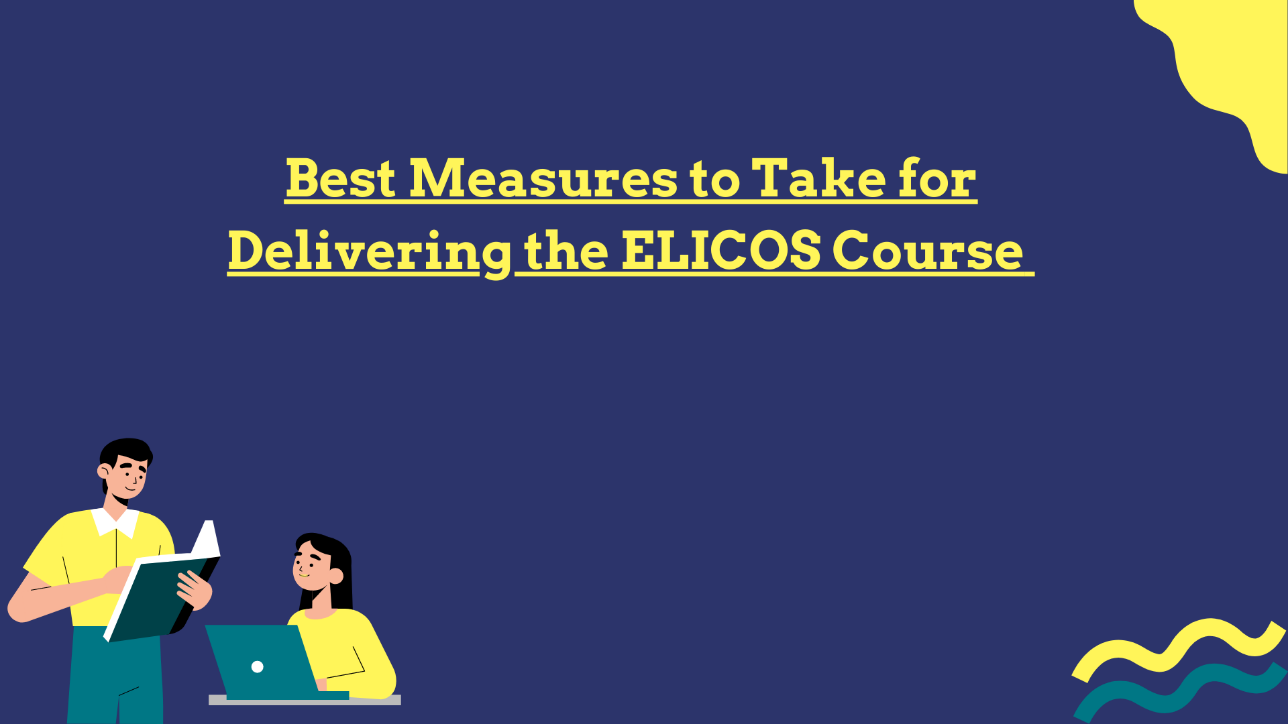Introduction
ELICOS providers in Australia are at the forefront of the country’s education sector, with enrolments surging by 90% in 2022. This growth is being driven by the increasing number of international students choosing to study in Australia and the high demand for English language training.
To meet the needs of this growing student base, ELICOS providers must deliver high-quality courses that are aligned with the national standards. This means working in collaboration with the national association and Australia’s ELICOS National Standards to ensure that all courses meet the required benchmarks.
In this blog post, weIill discuss:
- the eligibility for RTOs to deliver an ELICOS course
- the ELICOS standards
- measures to take for delivering the ELICOS course
We will also answer some of the most asked questions about ELICOS in Australia.
If you are an RTO who is committed to providing the best possible ELICOS education, this blog post is for you. By following these steps and the advice we provide, you can become a major contributor to Australia’s higher education sector and help international students achieve their academic goals.
But let me reintroduce what is ELICOS to you!
What is ELICOS?

Before learning about the standards let us understand the meaning of ELICOS. ELICOS is an English language course for international or overseas students in Australia. ELICOS is an acronym for English Language Intensive Course for Overseas Students. These ELICOS students study English for various learning objectives:
- English is their second language, and they want to learn English to speak it fluently.
- They are planning to teach English in their home country.
- They want to score well in IELTS exam and much more.
What is the eligibility for RTOs to deliver an ELCIOS course?
- To deliver an ELICOS course to international students training providers must be listed on the CRIOCS (Commonwealth Register of Institutions and Courses for Overseas Students) registry while being an
- The ELICOS course name must be on the scope of registration of the RTO with an approved location.
What are ELICOS standards?

- ELICOS (English Language Intensive Courses for Overseas Students) course standards apply to all ELICOS students on a student visa.
- The ELICOS standards are National standards and were developed by the Australian government with collaboration from state governments, tertiary governments and the
- The ELICOS standards are a set of guidelines for regulatory authorities to make judgements on approving training providers to deliver ELICOS courses and get registered on the CRICOS
- These standards are legislative instruments under the ESOS legislative framework and are mandatory to be fulfilled.
- All ELICOS providers and ELICOS students are mandated to follow the ELICOS Standards 2018 revised in 2017 and approved by the Education and Training Minister’s delegate. RTOs can access the standards at the
- All students on a student visa are mandated to study English full-time with 20 hours minimum classroom study of English language learning.
- All ELICOS courses Australia follow the ELICOS Standards 2018 that apply to all ELICOS providers from 1 January 2018.
Best measures to take for delivering the ELICOS course

- Develop high-quality ELICOS course lessons.
Your ELICOS course lessons should be clear, engaging, and visually appealing. They should also be aligned with the latest ELICOS Standards and help students achieve their communicative competency goals.
Make sure to avoid duplicating learning resources and give students enough opportunities to practice. Tailor your lessons to the different learning styles, abilities, and cultural backgrounds of your students.
- Promote academic integrity and support student learning.
Educate your students and ELICOS teachers on academic conduct and provide them with the tools and resources they need to succeed.
Design effective assessments that align with ELICOS requirements and help students achieve their learning objectives.
If you are delivering your ELICOS courses online, provide your students and teachers with the necessary technical support, online resources, and tools.
Provide regular feedback to your students and teachers to help them improve their learning and teaching experience.
- Create a supportive learning environment.
Your students should feel supported throughout their ELICOS journey. Create student communities and open lines of communication so that students can interact with each other and their teachers.
Offer free consultations to students to help them create optimal learning environments.
Provide practical English language activities and the latest resources to further enhance student support.
- Support your ELICOS teachers.
Your ELICOS teachers are essential to the success of your ELICOS program. Provide them with professional training from experienced education specialists.
Make sure your ELICOS teachers are trained in online ELICOS teaching and international student course delivery.
Support the wellbeing of your ELICOS teachers so that they can achieve their teaching goals.
- Validate your ELICOS training resources.
When purchasing ELICOS training resources, start by validating the sample. Consult with experienced RTO consultants to get their feedback on ELICOS learner resources and materials.
- Place your ELICOS students in a class appropriate to their current language proficiency level, learning goals, and learning needs.
To ensure that your ELICOS students are placed in the right class, you should conduct a language proficiency test at the start of their course. This will help you to identify their strengths and weaknesses and to place them in a class where they can learn effectively.
You should also consider the student’s learning goals and needs when placing them in a class. For example, if a student is interested in studying at an Australian university, they may need to be placed in a class that prepares them for the academic English requirements of their chosen course.
- Identify the special needs of a student, make arrangements to address the need, and support the student to learn effectively.
Some ELICOS students may have special needs, such as a learning disability or a physical or mental impairment. It is important to identify the special needs of your students and to make arrangements to address those needs. This may involve providing additional support in class, such as one-on-one tutoring or the use of assistive technology.
You should also document the arrangements for special needs in the student’s Individual Learning Plan (ILP). This will help to ensure that all staff involved in the student’s education are aware of their needs and how to support them.
- Maintain a healthy teacher-to-student ratio in class (do not exceed 1:18 per class).
A healthy teacher-to-student ratio is essential for effective ELICOS instruction. This is because it allows the teacher to give individual attention to each student and to provide timely feedback.
In Australia, the maximum teacher-to-student ratio for ELICOS classes is 1:18. However, I recommend that RTOs aim to keep the ratio lower if possible. This will help to ensure that all students receive the support they need to succeed.
- Inform your students of the outcomes to be achieved from the course and, for each learning block, the learning outcomes for that block.
It is important to keep your students informed of the outcomes they are expected to achieve from their ELICOS course. This will help them to stay focused on their learning and to track their own progress.
At the start of each learning block, you should also inform your students of the specific learning outcomes for that block. This will help them to understand what they will be learning and how they will be assessed.
- Allow your ELICOS trainers to customise teaching to student needs, giving them access to the resources required for delivery of the course.
In my experience, it is best to allow your ELICOS trainers to customise their teaching to the needs of their students. This is because they are the ones who are most familiar with their students’ strengths, weaknesses, and learning styles.
You should also provide your ELICOS trainers with access to the resources they need to deliver the course effectively. This may include access to textbooks, online resources, and teaching materials.
- Train your ELICOS teachers to research course content and developments in English language teaching to meet student needs.
The field of English language teaching is constantly evolving, so it is important for ELICOS teachers to keep their knowledge up-to-date. You should train your ELICOS teachers to research course content and developments in English language teaching. This will help them to ensure that their teaching is effective and that their students are learning the latest English language skills.
By following these additional measures, RTOs can deliver high-quality ELICOS courses that help their students to achieve their English language learning goals.
Want to find the best ELICOS Course material for your RTO?
At VET Resources we offer the best and the highest quality training materials for ELICOS. You can easily contextualise them according to your RTO’s needs. We offer complete assistance for contextualising materials as well. For more information contact us here.
Conclusion
ELICOS courses are an important part of Australia’s overseas education sector. ELICOS students need to learn or improve their English skills for work or career purposes, to become fluent in English or for travelling. Some of the students want to get higher education in English and hence require language skills. Follow the measures given in the blog to become the best provider of ELICOS in Australia. These measures will be a wise investment to achieve powerful benefits in the training delivery.
Frequently Asked Questions (FAQs)
Q.1. Are all English courses in Australia ELICOS courses?
A.1. There are various types of English language courses being offered in Australia. But if these courses are not being delivered to international or overseas, they are not called ELICOS courses.
Q.2. Who are overseas students?
A.2. Overseas students are students who possess a student visa to study in Australia, issued by the Australian Government.
Q.3. Does an organisation have to be qualified as RTO to deliver ELICOS courses?
A.3. No, an organisation delivering ELICOS courses need not be a registered training organisation (RTO).
Q.4. Does a provider have to hold a NEAS certification to deliver an ELICOS course?
A.4. ELICOS providers are not required to have a National English Language Teaching Accreditation Scheme (NEAS). But NEAS certification as a quality indicator for ELICOS providers.
Q.5 What is ESOS?
A.5. ESOS is Education Services for Overseas Students provider. ESOS assures high quality training and safeguarding Australia’s reputation in international education.
Q.6. What information should be available for interested students on the training provider’s official website?
A.6 RTOs should display all necessary information on the website. The website should be able to answer:
- Who can apply for ELICOS
- Course description
- Duration of the course and duration of class hours
- Contact hours
- Available types of course
- Attendance requirements
- Mode of delivery
- Enrolment requirements
- Minimum English language requirements
- Employment opportunities
- Additional requirements
- Topics for placement test
How much does the ELICOS course cost in Melbourne?
The cost of an ELICOS course in Melbourne varies depending on the provider, the length of the course, and the type of course. However, you can expect to pay around $2,000-$5,800 for a 10–30-week course.
How long are the most ELICOS courses?
ELICOS courses can range in length from 5 weeks to 52 weeks. The most common ELICOS course lengths are 10 weeks, 20 weeks, and 30 weeks.
Who can apply for ELICOS?
ELICOS courses are open to all students, regardless of their nationality or English language level. However, some ELICOS courses may have specific entry requirements, such as an IELTS score.
Disclaimer:
The information presented on the VET Resources blog is for general guidance only. While we strive for accuracy, we cannot guarantee the completeness or timeliness of the information. VET Resources is not responsible for any errors or omissions, or for the results obtained from the use of this information. Always consult a professional for advice tailored to your circumstances.






